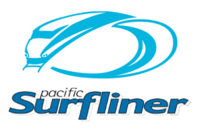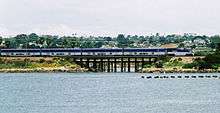Pacific Surfliner
 | |||||||||||||||||||||||||||||||||||||||||||||||||||||||||||||||||||||||||||||||||||||||||||||||||||||||||||||||||||||||||||||||||||||||||||||||||||||||||||||||||||||||||||||||||||||||||||||||||||||||||||||||||||||||||||||||||||||||||||||||||||||||||||||||||||||||||||||||||||||||||||||||||||||||||||||||||||||||||||||||||||||||||||||
|
A Pacific Surfliner enters San Clemente, California. | |||||||||||||||||||||||||||||||||||||||||||||||||||||||||||||||||||||||||||||||||||||||||||||||||||||||||||||||||||||||||||||||||||||||||||||||||||||||||||||||||||||||||||||||||||||||||||||||||||||||||||||||||||||||||||||||||||||||||||||||||||||||||||||||||||||||||||||||||||||||||||||||||||||||||||||||||||||||||||||||||||||||||||||
| Overview | |||||||||||||||||||||||||||||||||||||||||||||||||||||||||||||||||||||||||||||||||||||||||||||||||||||||||||||||||||||||||||||||||||||||||||||||||||||||||||||||||||||||||||||||||||||||||||||||||||||||||||||||||||||||||||||||||||||||||||||||||||||||||||||||||||||||||||||||||||||||||||||||||||||||||||||||||||||||||||||||||||||||||||||
|---|---|---|---|---|---|---|---|---|---|---|---|---|---|---|---|---|---|---|---|---|---|---|---|---|---|---|---|---|---|---|---|---|---|---|---|---|---|---|---|---|---|---|---|---|---|---|---|---|---|---|---|---|---|---|---|---|---|---|---|---|---|---|---|---|---|---|---|---|---|---|---|---|---|---|---|---|---|---|---|---|---|---|---|---|---|---|---|---|---|---|---|---|---|---|---|---|---|---|---|---|---|---|---|---|---|---|---|---|---|---|---|---|---|---|---|---|---|---|---|---|---|---|---|---|---|---|---|---|---|---|---|---|---|---|---|---|---|---|---|---|---|---|---|---|---|---|---|---|---|---|---|---|---|---|---|---|---|---|---|---|---|---|---|---|---|---|---|---|---|---|---|---|---|---|---|---|---|---|---|---|---|---|---|---|---|---|---|---|---|---|---|---|---|---|---|---|---|---|---|---|---|---|---|---|---|---|---|---|---|---|---|---|---|---|---|---|---|---|---|---|---|---|---|---|---|---|---|---|---|---|---|---|---|---|---|---|---|---|---|---|---|---|---|---|---|---|---|---|---|---|---|---|---|---|---|---|---|---|---|---|---|---|---|---|---|---|---|---|---|---|---|---|---|---|---|---|---|---|---|---|---|---|---|---|---|---|---|---|---|---|---|---|---|---|---|---|---|---|---|---|---|---|---|---|---|---|---|---|---|---|---|---|---|---|---|---|---|---|---|---|---|---|---|---|---|---|---|---|---|---|---|---|---|
| Service type | Inter-city rail | ||||||||||||||||||||||||||||||||||||||||||||||||||||||||||||||||||||||||||||||||||||||||||||||||||||||||||||||||||||||||||||||||||||||||||||||||||||||||||||||||||||||||||||||||||||||||||||||||||||||||||||||||||||||||||||||||||||||||||||||||||||||||||||||||||||||||||||||||||||||||||||||||||||||||||||||||||||||||||||||||||||||||||||
| Status | Operational | ||||||||||||||||||||||||||||||||||||||||||||||||||||||||||||||||||||||||||||||||||||||||||||||||||||||||||||||||||||||||||||||||||||||||||||||||||||||||||||||||||||||||||||||||||||||||||||||||||||||||||||||||||||||||||||||||||||||||||||||||||||||||||||||||||||||||||||||||||||||||||||||||||||||||||||||||||||||||||||||||||||||||||||
| Locale | Southern California | ||||||||||||||||||||||||||||||||||||||||||||||||||||||||||||||||||||||||||||||||||||||||||||||||||||||||||||||||||||||||||||||||||||||||||||||||||||||||||||||||||||||||||||||||||||||||||||||||||||||||||||||||||||||||||||||||||||||||||||||||||||||||||||||||||||||||||||||||||||||||||||||||||||||||||||||||||||||||||||||||||||||||||||
| First service | June 1, 2000 | ||||||||||||||||||||||||||||||||||||||||||||||||||||||||||||||||||||||||||||||||||||||||||||||||||||||||||||||||||||||||||||||||||||||||||||||||||||||||||||||||||||||||||||||||||||||||||||||||||||||||||||||||||||||||||||||||||||||||||||||||||||||||||||||||||||||||||||||||||||||||||||||||||||||||||||||||||||||||||||||||||||||||||||
| Current operator(s) |
Amtrak Caltrans | ||||||||||||||||||||||||||||||||||||||||||||||||||||||||||||||||||||||||||||||||||||||||||||||||||||||||||||||||||||||||||||||||||||||||||||||||||||||||||||||||||||||||||||||||||||||||||||||||||||||||||||||||||||||||||||||||||||||||||||||||||||||||||||||||||||||||||||||||||||||||||||||||||||||||||||||||||||||||||||||||||||||||||||
| Ridership | 2,705,823 (FY13)[1] | ||||||||||||||||||||||||||||||||||||||||||||||||||||||||||||||||||||||||||||||||||||||||||||||||||||||||||||||||||||||||||||||||||||||||||||||||||||||||||||||||||||||||||||||||||||||||||||||||||||||||||||||||||||||||||||||||||||||||||||||||||||||||||||||||||||||||||||||||||||||||||||||||||||||||||||||||||||||||||||||||||||||||||||
| Website | Pacific Surfliner Train | ||||||||||||||||||||||||||||||||||||||||||||||||||||||||||||||||||||||||||||||||||||||||||||||||||||||||||||||||||||||||||||||||||||||||||||||||||||||||||||||||||||||||||||||||||||||||||||||||||||||||||||||||||||||||||||||||||||||||||||||||||||||||||||||||||||||||||||||||||||||||||||||||||||||||||||||||||||||||||||||||||||||||||||
| Route | |||||||||||||||||||||||||||||||||||||||||||||||||||||||||||||||||||||||||||||||||||||||||||||||||||||||||||||||||||||||||||||||||||||||||||||||||||||||||||||||||||||||||||||||||||||||||||||||||||||||||||||||||||||||||||||||||||||||||||||||||||||||||||||||||||||||||||||||||||||||||||||||||||||||||||||||||||||||||||||||||||||||||||||
| Start | San Luis Obispo, California | ||||||||||||||||||||||||||||||||||||||||||||||||||||||||||||||||||||||||||||||||||||||||||||||||||||||||||||||||||||||||||||||||||||||||||||||||||||||||||||||||||||||||||||||||||||||||||||||||||||||||||||||||||||||||||||||||||||||||||||||||||||||||||||||||||||||||||||||||||||||||||||||||||||||||||||||||||||||||||||||||||||||||||||
| Stops | 27 | ||||||||||||||||||||||||||||||||||||||||||||||||||||||||||||||||||||||||||||||||||||||||||||||||||||||||||||||||||||||||||||||||||||||||||||||||||||||||||||||||||||||||||||||||||||||||||||||||||||||||||||||||||||||||||||||||||||||||||||||||||||||||||||||||||||||||||||||||||||||||||||||||||||||||||||||||||||||||||||||||||||||||||||
| End | San Diego, California | ||||||||||||||||||||||||||||||||||||||||||||||||||||||||||||||||||||||||||||||||||||||||||||||||||||||||||||||||||||||||||||||||||||||||||||||||||||||||||||||||||||||||||||||||||||||||||||||||||||||||||||||||||||||||||||||||||||||||||||||||||||||||||||||||||||||||||||||||||||||||||||||||||||||||||||||||||||||||||||||||||||||||||||
| Distance travelled | 350 miles (563 km) | ||||||||||||||||||||||||||||||||||||||||||||||||||||||||||||||||||||||||||||||||||||||||||||||||||||||||||||||||||||||||||||||||||||||||||||||||||||||||||||||||||||||||||||||||||||||||||||||||||||||||||||||||||||||||||||||||||||||||||||||||||||||||||||||||||||||||||||||||||||||||||||||||||||||||||||||||||||||||||||||||||||||||||||
| Average journey time | 8 hours 15 minutes | ||||||||||||||||||||||||||||||||||||||||||||||||||||||||||||||||||||||||||||||||||||||||||||||||||||||||||||||||||||||||||||||||||||||||||||||||||||||||||||||||||||||||||||||||||||||||||||||||||||||||||||||||||||||||||||||||||||||||||||||||||||||||||||||||||||||||||||||||||||||||||||||||||||||||||||||||||||||||||||||||||||||||||||
| Train number(s) |
Southbound: 562, 564, 566, 768, 572, 774, 580, 582, 784, 790/1790, 796 Northbound: 761/1761, 763, 565, 567, 769, 573, 777, 579, 583, 785, 591, 595 Thruway bus: 5804, 5818, 5801, 5811[2] | ||||||||||||||||||||||||||||||||||||||||||||||||||||||||||||||||||||||||||||||||||||||||||||||||||||||||||||||||||||||||||||||||||||||||||||||||||||||||||||||||||||||||||||||||||||||||||||||||||||||||||||||||||||||||||||||||||||||||||||||||||||||||||||||||||||||||||||||||||||||||||||||||||||||||||||||||||||||||||||||||||||||||||||
| On-board services | |||||||||||||||||||||||||||||||||||||||||||||||||||||||||||||||||||||||||||||||||||||||||||||||||||||||||||||||||||||||||||||||||||||||||||||||||||||||||||||||||||||||||||||||||||||||||||||||||||||||||||||||||||||||||||||||||||||||||||||||||||||||||||||||||||||||||||||||||||||||||||||||||||||||||||||||||||||||||||||||||||||||||||||
| Class(es) | Business and Unreserved Coach Class | ||||||||||||||||||||||||||||||||||||||||||||||||||||||||||||||||||||||||||||||||||||||||||||||||||||||||||||||||||||||||||||||||||||||||||||||||||||||||||||||||||||||||||||||||||||||||||||||||||||||||||||||||||||||||||||||||||||||||||||||||||||||||||||||||||||||||||||||||||||||||||||||||||||||||||||||||||||||||||||||||||||||||||||
| Seating arrangements | Surfliner bi-level cars | ||||||||||||||||||||||||||||||||||||||||||||||||||||||||||||||||||||||||||||||||||||||||||||||||||||||||||||||||||||||||||||||||||||||||||||||||||||||||||||||||||||||||||||||||||||||||||||||||||||||||||||||||||||||||||||||||||||||||||||||||||||||||||||||||||||||||||||||||||||||||||||||||||||||||||||||||||||||||||||||||||||||||||||
| Catering facilities | Seaview Café Car | ||||||||||||||||||||||||||||||||||||||||||||||||||||||||||||||||||||||||||||||||||||||||||||||||||||||||||||||||||||||||||||||||||||||||||||||||||||||||||||||||||||||||||||||||||||||||||||||||||||||||||||||||||||||||||||||||||||||||||||||||||||||||||||||||||||||||||||||||||||||||||||||||||||||||||||||||||||||||||||||||||||||||||||
| Technical | |||||||||||||||||||||||||||||||||||||||||||||||||||||||||||||||||||||||||||||||||||||||||||||||||||||||||||||||||||||||||||||||||||||||||||||||||||||||||||||||||||||||||||||||||||||||||||||||||||||||||||||||||||||||||||||||||||||||||||||||||||||||||||||||||||||||||||||||||||||||||||||||||||||||||||||||||||||||||||||||||||||||||||||
| Rolling stock |
EMD F59PHI locomotives "Surfliner" Cars Superliner I/II coaches | ||||||||||||||||||||||||||||||||||||||||||||||||||||||||||||||||||||||||||||||||||||||||||||||||||||||||||||||||||||||||||||||||||||||||||||||||||||||||||||||||||||||||||||||||||||||||||||||||||||||||||||||||||||||||||||||||||||||||||||||||||||||||||||||||||||||||||||||||||||||||||||||||||||||||||||||||||||||||||||||||||||||||||||
| Track gauge | 4 ft 8 1⁄2 in (1,435 mm) | ||||||||||||||||||||||||||||||||||||||||||||||||||||||||||||||||||||||||||||||||||||||||||||||||||||||||||||||||||||||||||||||||||||||||||||||||||||||||||||||||||||||||||||||||||||||||||||||||||||||||||||||||||||||||||||||||||||||||||||||||||||||||||||||||||||||||||||||||||||||||||||||||||||||||||||||||||||||||||||||||||||||||||||
| |||||||||||||||||||||||||||||||||||||||||||||||||||||||||||||||||||||||||||||||||||||||||||||||||||||||||||||||||||||||||||||||||||||||||||||||||||||||||||||||||||||||||||||||||||||||||||||||||||||||||||||||||||||||||||||||||||||||||||||||||||||||||||||||||||||||||||||||||||||||||||||||||||||||||||||||||||||||||||||||||||||||||||||
The Pacific Surfliner is a 350-mile (560 km) passenger train operated by Amtrak, with funding from the California Department of Transportation as part of the Amtrak California network. The Pacific Surfliner serves the communities on the coast of Southern California between San Diego and San Luis Obispo.
The service carried over 2.7 million passengers during fiscal year 2013, a 2.5% increase from FY2012. Total revenue during FY2013 was $62,576,548, an increase of 6.8% over FY2012.[1] The Pacific Surfliner was Amtrak's third-busiest service, and the busiest outside the Northeast Corridor.[1]
The Los Angeles-San Diego portion of the Pacific Surfliner route was once served by the Santa Fe Railway's San Diegan passenger trains until Amtrak took over operations. Initially there were three daily trips, but in 1976 the schedule was expanded. In 1988 the service was extended to Santa Barbara, followed in 1995 with one trip a day going all the way to San Luis Obispo. As the name "San Diegan" no longer reflected the extent of the route, it was renamed the Pacific Surfliner in 2000.[3] The route is named after the Atchison, Topeka and Santa Fe Railway's Surf Line.
Operations
The 350-mile (563 km) San Luis Obispo-San Diego trip takes approximately 8½ hours with an average speed of 41.2 miles per hour (66 km/h); maximum track speed is 79 to 90 miles per hour (127 to 145 km/h). Much of the Pacific Surfliner's scenic route follows the Pacific coast, although trains travel inland through expansive farmlands in Ventura County and industrial backlots in the Los Angeles Basin, San Fernando Valley, and parts of Orange County. The Pacific Surfliner operates 11 daily trains between Los Angeles and San Diego on weekdays, 12 on weekends.
On the northernmost part, there are four trains per day in each direction (out of the 11 total trains per day); frequency is greater on the Los Angeles-San Diego segment (seven trains a day serve only the southern section; four trains serve the entire route). Thruway Motorcoach connections are available between Santa Barbara, California and Paso Robles during hours when that part of the Coast Line track is in use by freight trains.
Because the San Diego, San Luis Obispo, and Goleta stations are not equipped to turn equipment, trains are operated in push-pull mode. The locomotive is at the rear of the train, pushing the train from Goleta/San Luis Obispo or San Diego to Los Angeles. At Los Angeles, the train reverses the station, and pulls the train to San Diego or Goleta/San Luis Obispo, respectively. A project is currently being prepared for run-through tracks at Union Station in Los Angeles.[4] As of 2007, the route recovers 63% of its operating expenses through ticket sales.[5]
LOSSAN
Local agencies along with the host railroads formed the Los Angeles–San Diego-San Luis Obispo Rail Corridor Agency (LOSSAN) in 1989.[6] The Pacific Surfliner is operated by Amtrak under the Amtrak California brand with funding provided by the California Department of Transportation (Caltrans). Serious discussions were held in 2009 regarding the local agencies administering the service rather than Caltrans.[7] California Senate Bill No. 1225, passed in 2014, allowed LOSSAN to amend the joint powers agreement and become the sponsor of state-supported intercity passenger rail service in the corridor.[8] In mid-2015, LOSSAN assumed oversight for the Surfliner.[9] They are also working with Caltrans to assess rail operations from Los Angeles to San Diego to develop better connections, close gaps in the schedule, and optimize the assets of the railroad.[10]
Stations served

- San Luis Obispo
- Grover Beach
- Guadalupe–Santa Maria
- Surf–Lompoc
- Goleta
- Santa Barbara
- Carpinteria
- Ventura
- Oxnard
- Camarillo (Limited service)
- Moorpark (Limited service)
- Simi Valley
- Chatsworth
- Northridge (Limited weekday service for Metrolink ticketholders)[11]
- Van Nuys/Sherman Oaks
- Burbank–Bob Hope Airport
- Glendale
- Los Angeles Union Station
- Fullerton
- Anaheim
- Santa Ana
- Irvine
- San Juan Capistrano
- San Clemente Pier (Limited service)
- Oceanside
- Carlsbad Village (Limited service)
- Carlsbad Poinsettia (Limited service)
- Encinitas (Limited service)
- Solana Beach
- Sorrento Valley (Limited service)
- San Diego (Old Town) (Limited service)
- San Diego
Rolling stock
| ||||||||||||||||

The Pacific Surfliner uses a fleet of "Surfliner" bi-level, high-capacity passenger cars owned by Amtrak (AMTK) and the California Department of Transportation (CDTX). Each trainset has a business class car, three coach cars, a coach/café car with food sales on the lower level, and a coach/baggage/cab car equipped with coach seating, a checked baggage space on the lower level, and engineer's operating cab and headlights on one end, allowing the train to be operated in push-pull mode.[12]
The "Surfliner" cars used on the route are painted in a blue and silver livery that is unique to the Pacific Surfliner. "Surfliner" cars are equipped with overhead luggage racks, reclining seats with tray tables and footrests, reading lights, restrooms, AmtrakConnect WiFi, 120v power outlets, and a wheelchair ramp.[13]
High ridership on the Pacific Surfliner led officials to add a third coach to most trainsets. But due to a lack of "Surfliner" coaches, Superliner coaches from Amtrak's long-distance fleet are often used on the route. Because these Superliner coaches lack automatic doors they are usually placed between the cab car and "Surfliner" coach car.
Car shortages have also led Amtrak to operate one single-level trainset on the Pacific Surfliner consisting of a 6 Amfleet I or Horizon coach cars, a Horizon club-dinette car providing business class seating and food sales, and a Non-Powered Control Unit (an old F40PH locomotive converted to serve as a cab/baggage car.)[12]
All Pacific Surfliner trains are pulled by Amtrak-owned locomotives. Amtrak maintains a dedicated fleet of 15 EMD F59PHI locomotives painted to match the livery of the "Surfliner" cars. Locomotives from the long-distance fleet are often used, including the P42DC.
Route notes

Amtrak's Thruway Motorcoach bus service connects passengers from Santa Barbara and San Luis Obispo to Solvang, Buellton, Lompoc, Grover Beach, Atascadero and Paso Robles.[14]
Track hosts
- Union Pacific Railroad: San Luis Obispo – Moorpark
- Southern California Regional Rail Authority: Moorpark – Los Angeles
- BNSF Railway: Los Angeles – Fullerton
- Southern California Regional Rail Authority: Fullerton – Orange County/San Diego County line
- North County Transit District: Orange County/San Diego County line – San Diego
See also
References
- 1 2 3 "Amtrak Sets Ridership Record And Moves The Nation's Economy Forward - America’s Railroad helps communities grow and prosper" (PDF) (Press release). Amtrak. October 14, 2013. Retrieved 2014-09-03.
- ↑ Pacific Surfliner Schedule, effective April, 1, 2013
- ↑ Gabbard, Dana (September 24, 2012). "History of the Surfliner, LOSSAN and a Look at Pending Legislation". StreetsBlog LA. OpenPlans. Retrieved 2014-04-11.
- ↑ "SCRIP - The Southern California Regional Interconnection Project". Los Angeles County Metropolitan Transportation Authority. November 13, 2014. Retrieved 2014-11-22.
- ↑ Lam Nguyen (September 23, 2008). "FY 2007-08 Rail Operations Report" (PDF). State of California Department of Transportation.
- ↑ "The Los Angeles – San Diego – San Luis Obispo (LOSSAN) Rail Corridor Agency" (PDF). San Luis Obispo Council of Governments. Retrieved 2009-12-06.
- ↑ "LOSSAN Board discusses JPA and the Future Governance of Passenger Rail in Southern California". Rail Passenger Association of California & Nevada. Retrieved 2009-12-06.
- ↑ "Senate Bill No. 1225" California Secretary of State (September 29, 2012)
- ↑ Sheehan, Tim (June 26, 2015). "Valley agency takes control of Amtrak San Joaquin trains". Fresno Bee. Retrieved 11 February 2016.
- ↑ Weikel, Dan (January 27, 2015) "Little-known agency keeps commuter rail network on track" Los Angeles Times
- ↑ http://metrolinktrains.com/pdfs/Rail2Rail/Rail2Rail_timetable_Oxnard_130407.pdf
- 1 2 3 "Amtrak - Pacific Surfliner". Retrieved 2013-06-29.
- ↑ "Inside the Pacific Surfliner". Retrieved 2013-06-30.
- ↑ "Pacific Surfliner timetable" (PDF). Amtrak. April 2, 2007. Retrieved 2007-06-15.
External links
| Wikimedia Commons has media related to Pacific Surfliner. |
- Pacific Surfliner Train
- Amtrak California
- Amtrak - Train Routes in California
- LOSSAN Board
- Pacific Surfliner Schedule effective April 7, 2014
| ||||||||||||||||||||||
| ||||||||||||||||||||||||||||||||||||||||||||||||||||||
| ||||||||||||||||||||||||||||||||||||||||||||
| ||||||||||||||||||||||||||||||||||||||
